#evo bio
Text
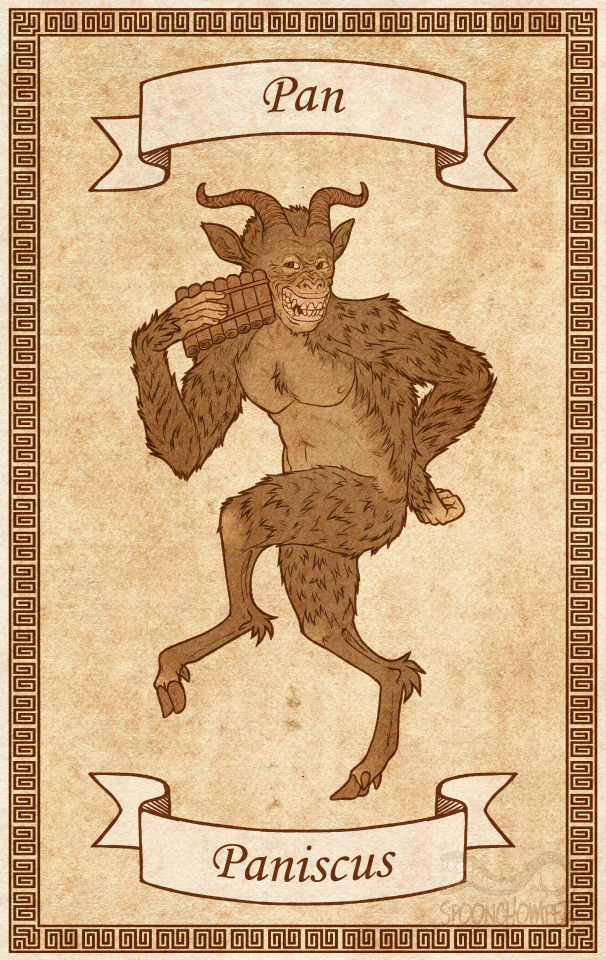
For the record, I dislike bonobos and chimps cuz they give me those uncanny valley heebie jeebies... which makes me love them :D
I had a silly thought while looking through my evolution biology notes for another class
This fucker has been sittin in my wips for weeks now, away with you ape
81 notes
·
View notes
Text
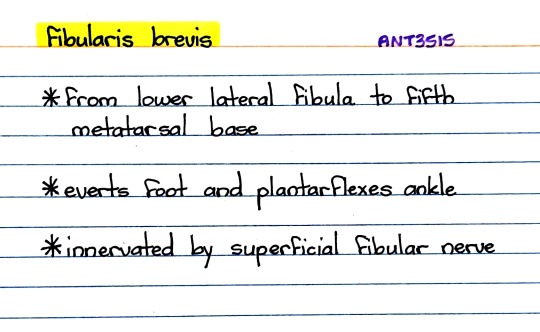
Patreon
#studyblr#notes#medblr#medical notes#med notes#anatomy#human anatomy#evolutionary anatomy#human evolutionary anatomy#evolution#evolutionary biology#biology#bio#anatomy notes#human evolution#evolutionary bio#evo bio#evodevo#evolutionary development#developmental biology#devbio#anthropology#anthropology notes#bioanthropology#biological anthropology#anatomy and physiology#anatomy & physiology#medical science#life science#health science
6 notes
·
View notes
Text
i know ryoko kui is a real one because she wrote 97+ chapters of a manga about fantasy ecosystems and food chains and not once did she write the phrase "survival of the fittest" (it's a bad phrase) (it's a social darwinist phrase even) (hated amongst biologists) (doesn't make sense) (darwin didn't use it) (coined by an business major) (one of the worst phrases in pop science) (no good)
#i think the closest she comes to this is when kabru says something about the weak being eaten but he also thinks all monsters should die#so i don't think he's like the voice of reason when it comes to ecosystems and evo bio NOT a kabru diss just saying#i think eat or be eaten is fine. it's like migrate adapt or die. i think it's fine and not the same as survival of the fittest#dungeon meshi#ETA: i was wrong darwin did use the phrase after it was coined. doesn't matter phrase still sux
20K notes
·
View notes
Text
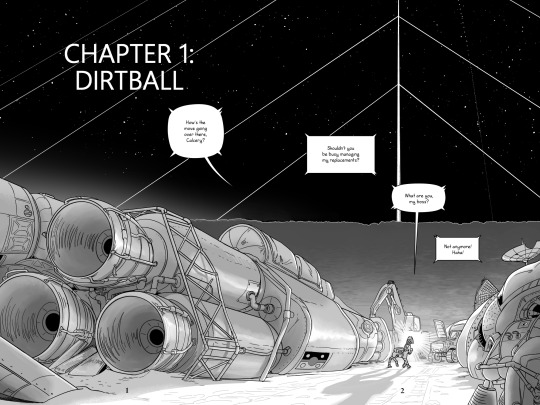


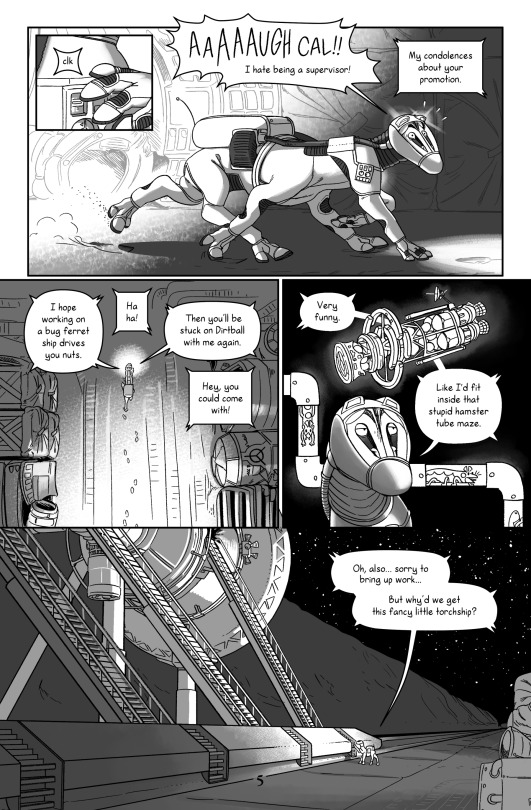
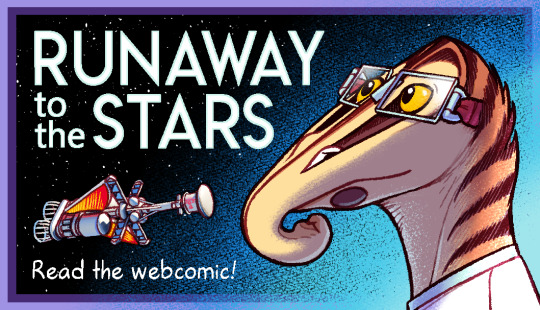
I finally (got help) slapping Wordpress into shape and Runaway to the Stars is now releasing as a public webcomic! Thank you so much for your support over the years, and sticking with me while I'm slowly chewing my way through this book. I'm very excited to share this story! It'll be updating every Tuesday, Thursday, and Saturday thanks to the massive Patreon backlog. Patreon will continue to update as I finish pages, which happens on a sporadic non-schedule.
If you experience bugs with the site report them to me. Some things may occasionally break, as coding problems tend to be a very "whack-a-mole" affair; and I'm still getting used to the interface.
#jayart#comic#webcomic#runaway to the stars#talita#aliens#speculative biology#spec bio#speculative evolution#spec evo#science fiction#scifi#hard scifi#uhhhh i can't think of anymore engagement tags#I'm terrible at advertising things#show your friends! show your dad! show your dog!
7K notes
·
View notes
Note
if youre still taking requests - Draw a cool species youve seen in the spec bio community mayhaps?

Enamoured by @sparrowlucero's space whales
#they're so fun#i love their gnarly teeth and fins. sick as hell#doodle requests#my art#art#spec bio#speculative biology#alien#spec evo#sketch
2K notes
·
View notes
Text
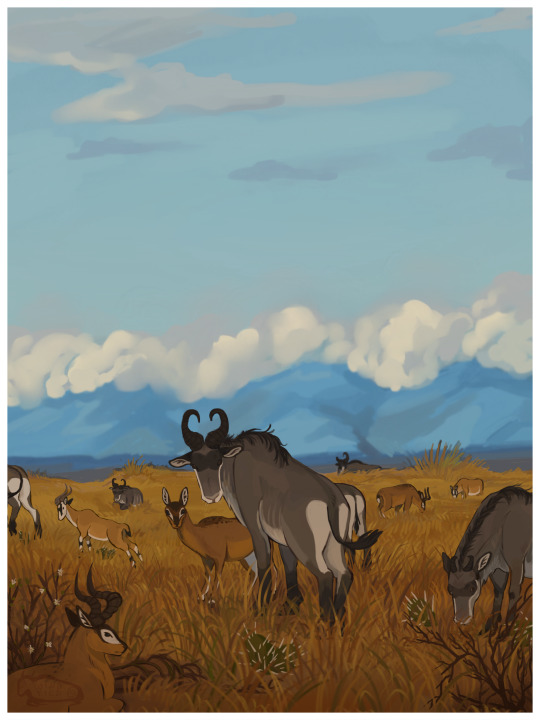
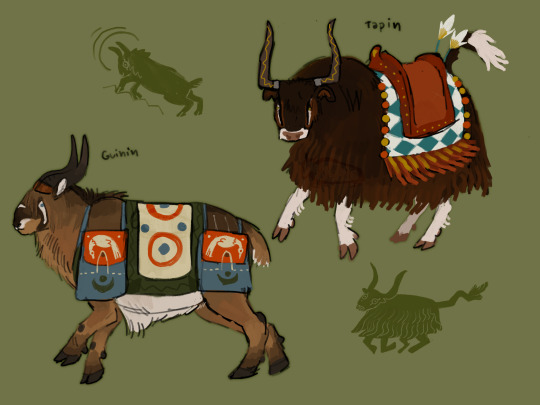
Some bovids of Lishel.
The western savanna is home to Keerso, Vans impala and, Tapper impalas. Keerso are one of the most populous animals in the area, leading to herds being domesticated for meat. Vans impala are seen as blessed animals, and killing them is looked down on.
The mountainous eastern coast is home Guinin, and Tapin. Both have been domesticated, wild populations still exist naturally. Guinin are often used in hauling due to their hefty builds. Tapin are fast, and sure footed. They can jump along tough terrain with ease and are often used for general transport. These species as historically important to the area.
#sokiin#illustration#worldbuilding#original species#speculative biology#concept art#spec bio#speculative zoology#spec evo#speculative evolution#bovidae#painting#ungulates
1K notes
·
View notes
Text
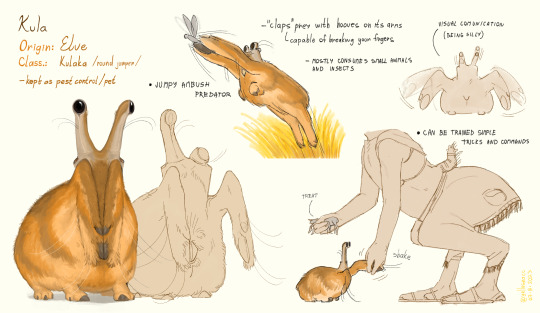
Kula!
A popular domesticated animal of slomen.
Kula are adapted for grassy areas with lots of small prey. In the wild, they either jump after flying or jumping prey or wait at burrows before smashing their prey with their hooves. If the smash isn't enough they hold it to their beak and finish it. Some species are more specialized to wait while others to jump. The domesticated Kula is speculated to be one of the more energetic hunters, mostly interested in 'insects'.
In ancient times wild Kula were attracted to sloman settlements as they would also attract prey with the slomans' food and light.
The slomen would soon learn that Kula were not pests since the wild animals were yet to be spoiled by premium meat cuts and preferred fresh moving meat that the slomen didn't want around.
In current times many cultures keep these animals as pest control on farms and in larger houses. They can be commonly seen in underground rooms that serve as food storage but for a healthy mental state, they need time on the sun.
While in the wild they are usually solitary or in small groups, Kula have a complex body language that they use to express their mood and/or needs. This can be very cute and funny, helping them become as loved as they are.
Many owners will grow to care deeply for their Kula but some cultures recognize them directly as pets. In the high-ranking societies of these cultures, pet Kula get even rounder. Often a certain trait is popular in a culture, resulting in localised breeds with different shapes and colors.

Some little goober possibilities - not entirely canon
In a few places, Kula are also part of a religion and have their own shrines.
#art#speculative biology#artists on tumblr#digital art#artwork#worldbuilding#speculative evolution#fantasy#spec bio#original alien species#original species#spec evo#speculative zoology#xenobiology#domesticated animals#slomen
2K notes
·
View notes
Text
If Wompers from my project (Land Of Borease) where selectively bred like todays dog breeds.
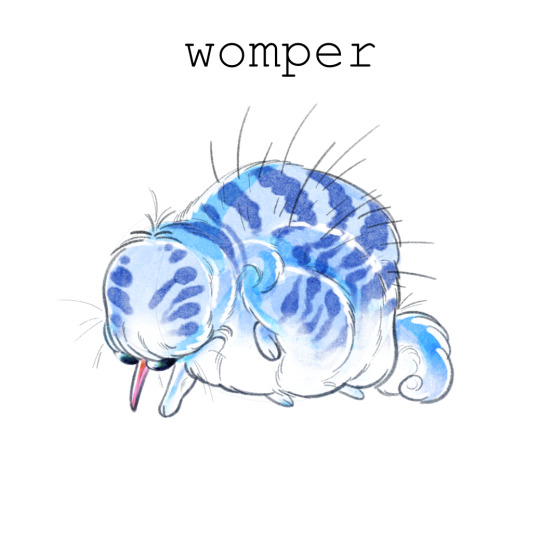
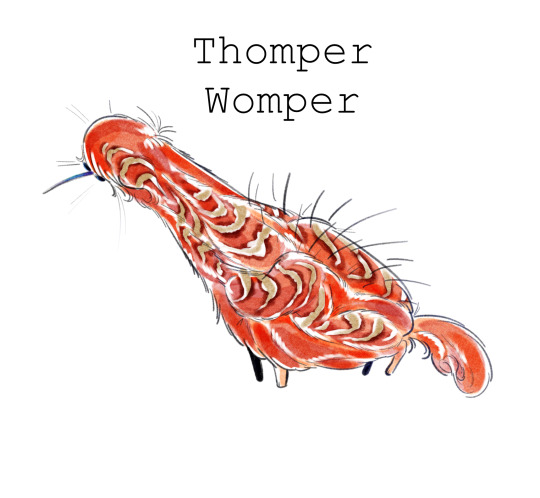


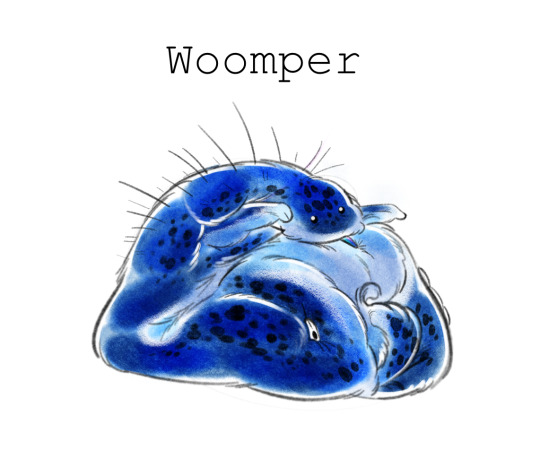
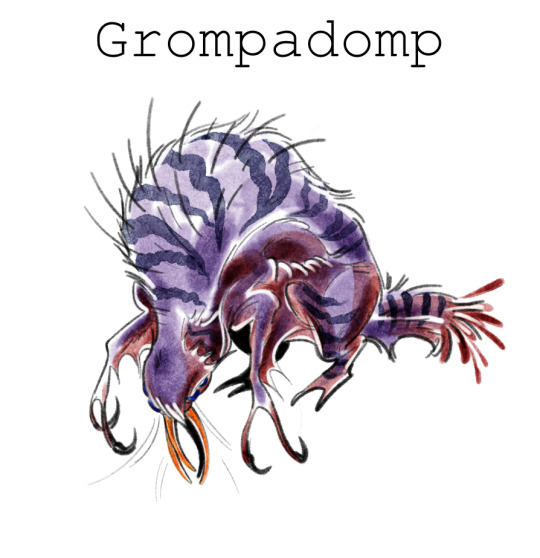
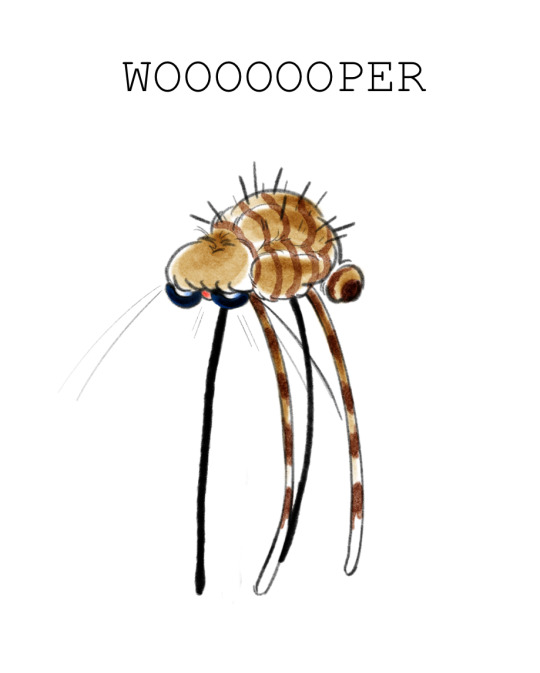
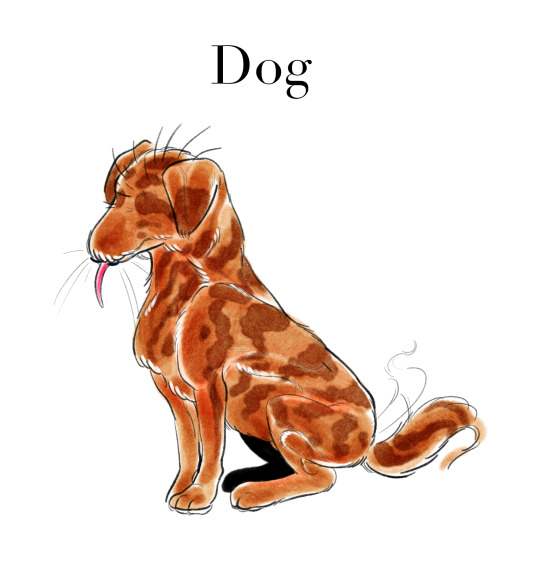
#xenobiology#alien species#spec bio#spec evo#speculative biology#speculative evolution#speculative ecology#speculative fiction#artists on tumblr#speculative worldbuilding#land of borease
923 notes
·
View notes
Text

handses and feetses redesign
without text
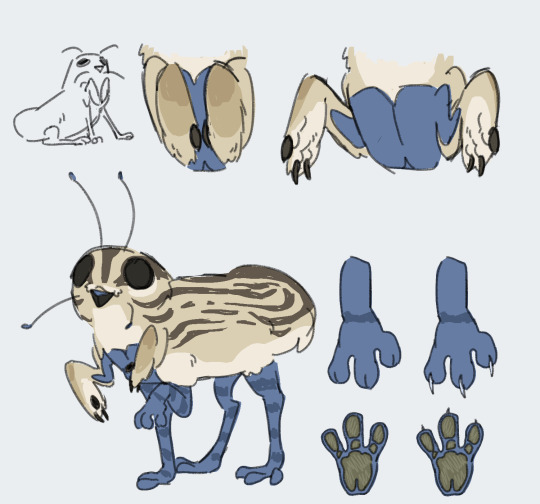
#ensthir#spec bio#spec evo#speculative biology#speculative evolution#speculative zoology#original species#alien species#sophont
1K notes
·
View notes
Text
Alien Questionnaire - A Biological Perspective
A while ago, somebody linked me a very comprehensive worldbuilding questionnaire. For most aspects of a fictional society, it was great, but I noticed it assumed that anyone using it was making up a fictional human society, or at least a society of beings very similar to humans. As such, there was almost nothing in the biology department, which to me is one of the best parts! Thus, this questionnaire was born.
These questions are designed to help people worldbuild from a biological foundation. As such, the questionnaire only touches lightly on other aspects of a fictional society, and is more of a jumping off point. I wrote it with the aim of using it to develop aliens, but it should be suitable for any project with non-humanoid species, such as sapient terrestrial animals.
Have fun! I'd love to see your answers :)
------------------------------------------------------------------------------
General Anatomy
How many limbs do they have? Do they have limbs at all?
What are their primary manipulators? Where are they located? How does this affect their tool use, building ability, etc?
What kind of body covering do they have, e.g. hair, scales, feathers? How do they clean it? Do they shed this covering constantly, or all at once at certain times?
Can they maintain a constant body temperature? If not, how do they deal with changing environmental temperatures?
What kind of habitat do they live in? Both specific habitat, and broader such as on land vs in water.
What adaptations do they have for living in this habitat?
What kind of creature did they evolve from?
What are the similarities and differences to their closest living relatives?
What resource(s) is the most necessary and urgent for them? E.g. for many animals, but not all, it’s water.
What are some common mutations? E.g. eye colours, ability to digest lactose in humans.
What injuries or illnesses are considered disabling?
How is their healing ability? Can they regenerate? If they can, is that limited to certain body parts or a certain number of times?
Senses
What senses do they have? E.g. sight, smell, electroreception, etc.
How good are those senses?
Which of their sense/s do they use the most in everyday life?
How might this choice of sense impact the way they interact with the world?
Can they detect things that Earth creatures cannot? If yes, how and why?
Movement
How do they move? Do they walk, crawl, fly, etc?
If they have multiple modes of movement, which is preferred, and why?
Which part/s of their body do they use to move?
What is their speed and endurance like?
How agile are they?
Do they rely mainly on their own bodies for travel, or do they use pack animals and machines?
How often do they move around? Are they mainly sedentary, do they move a lot within a set area, do they migrate, etc?
Do they have different levels of mobility depending on age, sex, or other biological group? E.g. young barnacles are able to swim, while adults are anchored permanently to a surface.
Reproduction and Lifecycle
How many sexes are there?
Are there differences between the sexes (ignoring the reproductive system)?
Are there different castes, such as in honeybees or naked mole rats? If so, what is the function of each caste?
Are differences in sex or caste used to justify discrimination or hierarchy? How might these ideas differ in different populations?
Do they have a concept of gender? If so, is gender affected by sex, caste, or some other factor?
How do they attract a mate? Do they release a chemical into the air, do an elaborate display, etc?
Does one individual try to actively woo another, or is courtship more mutual?
What do they find attractive in members of the same species?
What is the usual reproductive partnership? E.g. two individuals, one main reproducing individual with a harem, no set partner, etc.
How long do they live?
How are young brought into the world? Live birth, eggs, spores, etc?
Is producing young a painful, dangerous process, or is it easy?
How much parental investment is there? Are there many young with little investment, or few young with a lot of investment (r vs K strategy)? Or is it somewhere in the middle?
How many offspring are produced at a time? Think about how attitudes towards children may differ between a species that produces one or two, and a species that produces dozens or even hundreds at a time.
How do they grow? Are they born looking like miniature adults, gradually growing bigger? Do they have specific phases of high growth, like puberty? Do they have a larval phase, metamorphosis?
How self-sufficient are they as young? Can they move around and feed themselves as soon as they are born? Do they require parental care?
What is the usual structure of childcare? Single or multiple parents/related individuals? Communally raised?
Is sex purely for reproduction, or does it serve other purposes?
What kind of sexuality is considered the norm? This doesn’t just refer to same/other sex pairings, but the culture around sex in general.
Diet and Foodchain
What is their diet? Are they carnivores, omnivores, frugivores, insectivores, etc?
Do they feed off an unusual source, for example rocks, metals, or (in appropriate settings) something like magic or souls?
What physical adaptations do they have for this diet?
Is their diet very restricted, or can they have a wide range of foods?
How often do they eat? What is the culture around mealtimes, if any?
Are they prey for other organisms? For each other?
If they are, how do they deal with it? Do they fight back, have barriers, or do they accept it as a part of life?
If they are hunters themselves, what is their attitude to killing other organisms? Are they respectful? Prideful of their kill? Is it completely trivial?
If they are hunters, how do they hunt? Are they solitary or packhunters? Are certain members of the group designated to hunt?
Are the results of foraging or hunting shared, or is it everyone for themself?
Are they parasitic, parasitised, or in a symbiotic relationship with any other organisms?
Body Rhythms
How often do they sleep?
What time of the day are they most active? Are they nocturnal, diurnal, crepuscular?
Do they generally sleep for one long period a day, multiple shorter periods throughout, or something in between?
Do they sleep to cope with extreme temperatures or bad conditions, i.e. hibernate or aestivate?
Do they have any biological processes that disrupt their life e.g. moulting, reproductive cycles, etc?
If yes, how does their society accommodate for these processes? Does it accommodate them at all?
Communication
What is their main method of communication? Sound, visuals, scent, etc? Think about their main sense and how this would affect communication.
What is their body language like? What small moving parts might aid their body language?
If they have multiple methods of communication, are they all given equal weight, or is one considered higher than others?
Society
How sociable are they?
If social, what is the usual social structure?
Are there hierarchies? How strict or relaxed are the roles?
How are disputes usually settled? Is it more common to be violent or appease the other party?
If not social, what is the reaction to being with other individuals? Do they become aggressive or stressed? Do they tolerate each other?
What is the usual size of a community? Do they have communities at all?
Do they have an in-group vs out-group mentality? If so, how strong is it? This generally relates to how scarce or plentiful resources were during their evolution, and how territorial their ancestors were.
What kind of bonds do they form?
On the spectrum of individualistic to community-oriented, where do they fall?
Do they have a strong sense of personal identity? Think about how this might tie in with the previous question.
What are the main things they derive identity from? Occupation, gender, family ties, etc?
Do they have names? If yes, how are these names formed? Are they given by another party or chosen by the individual?
Have they domesticated any creatures? If so, what do they use these creatures for?
Do they have any unusual relationships with other creatures on their planet (beyond predation, parasitism or mutualism)?
Do they produce art? What are their main forms of artistic expression? Think about how this will be linked to their main sense(s), communication method, and/or primary manipulators.
------------------------------------------------------------------------------
GLOSSARY
Primary manipulator: Main body part used to manipulate objects, e.g. hands in humans, trunks in elephants, feet in parrots.
Sedentary: Inactive, staying in the same place.
Caste (reproductive): A group within a species with differences in body type and reproductive ability.
Symbiosis/Mutualism: Interactions where both parties benefit, e.g. cleaner fish getting a meal in exchange for picking irritating parasites off larger fish.
Aestivate: To become inactive during hot or dry periods, usually involving being sealed in mucus or soil e.g. lungfish, snails.
Reproductive cycle: Regular hormone fluctuations that affect an animal’s fertility or attitude towards breeding. The cycles can range from months to years and can include things such as antler growth in male deer, heat cycles, and menstruation in humans.
#worldbuilding#biology#zoology#speculative evolution#speculative biology#spec evo#spec bio#alien#questionnaire#xenobiology
2K notes
·
View notes
Text

Industrial light ⚙
An experiment I made to see if I haven't forgotten how to make illustrations in my style.
Also it represents tovoxran cities' vibe and aesthetic (idk if it's cringe to use that word or not), basically steel beams, gears, metal scaffoldings and pipes everywhere. Just industrialism and utility.
The drawing itself is showing a heat generator in one of underground tovoxran cities on Tillturn (their homeworld). In the past they used to build their cities around active volcanoes or lava lakes for heat, because the whole cave system is cold, covered in ice and snow. Now they can build everywhere, as their technology allows that.
#myart#alien#alien species#original alien species#sci fi#science fiction#industrialism#illustration#speculative evolution#speculative biology#spec evo#spec bio#creature#creature design#worldbuilding#tovoxrans
671 notes
·
View notes
Text
Utik
The utik (yoo-tik) are a sophont species the rakii came in contact with when they first landed on Tkrin, their second largest moon orbiting Rek. The utik were actually the first to even set foot onto it, as they had no other choice. After suffering massive damage to their ship, the utik were forced to land on the lunar surface and hope to survive or await help.
Years later, the rakii show up, which started an a long, chaotic process of attempt of communication and debating ownership.


The bodies of the utik are actually not their true bodies. The actual sophont lies within the pearly cased cockpit. Utik like the Olac bio-mechs, mastered the technical art of bio-technology, having started on a very hot and humid planet. While unlike the Olac who switched to bio-technology as a means to evade a debilitating disease, the utik mastered it for years, working off various symbiotic organisms.
Their mech suits, or cyborg bodies you could say are symbiotic, as after their nervous and circulatory systems are linked, the pilot has full control of the suit, having it feed off waste material from the pilot. The suit then takes the waste, replenishes it, mixes it's own formula into it and feeds it back to the pilot. Like a plant, it gets a lot of energy off light and other forms of UV Retaining it for hours. These suits are suitable (ha) for open space, and lunar terran for a limited time. However proper measures are made to keep the suits tidy from "space dust" so no one goes out "naked" and risk exterior damage.
(quick sketch of utik 'pooters n screens. NOT ENTIRELY FINALIZED)
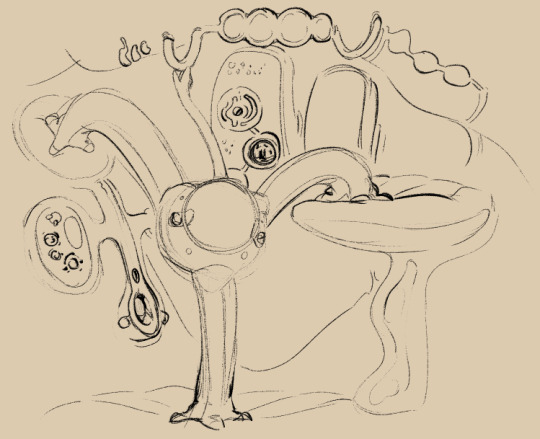
However, this isn't their true form. At least they didn't start off like this.
Way before, after they reached the ultimate feat in their development, their star was noticeably suffering, as it was predicted to eventually turn into black hole. While they had years 'till then, there wasn't enough time to perfect their original forms for the long-term space travel. So. as best they could, they learned to carefully strip and reduce themselves to nothing more than squishy muscle and brain matter, beforehand creating living space suits and sleeper pods to maintain what's left.
Several ships shot into space just in time before their star went dark and each ship jumped in different directions hoping to find and terraform a new world.
This group of utik weren't so lucky, as said before.
Now for the first half of the year, rakii and utik were on some tense terms. A lot of internal debates on who gets the moon. While utik were capable of defense, they weren't in a great position to, and the rakii weren't sure how to proceed with their first extraterrestrial contact. (Non-religious turned contact I'd guess???) UNTIL, one day it was brought ahead that, the utik secrete an anti-radiation slime. Something they came with naturally, just cranked to 10.

At first, the rakii thought to use this fluid as an applicable substance similar to sun-block, required to apply pre-spaceflight. However, it was revealed that they are extremely allergic to it. So skin-contact was a big no.
(Unfortunate rakii subject applying utik-based lotion. Results: swelling in skin, which can further cause blisters and splits)


After several trials, they came to a conclusion of using it as a gel layering in space suits, capable of absorbing radiation and protecting the wearer.
This discovery brought up a plan and a deal. It was agreed, rakii and utik would share the moon, making their first ever alliance, in exchange the utik would allow the rakii to harvest this anti-radiation goop off them, of course while exchanging knowledge, and resources.
427 notes
·
View notes
Text
Short Head of Biceps Femoris

Patreon
#studyblr#notes#medblr#medical notes#med notes#anatomy#human anatomy#evolutionary anatomy#human evolutionary anatomy#evolution#evolutionary biology#biology#bio#anatomy notes#human evolution#evolutionary bio#evo bio#evodevo#evolutionary development#developmental biology#devbio#anthropology#anthropology notes#bioanthropology#biological anthropology#anatomy and physiology#anatomy & physiology#medical science#life science#health science
2 notes
·
View notes
Text

✨ the little alien dudes return ✨
here’s one showing off his newly-carved artwork. he is very proud. the image depicts the symbol of the sun with extending rays over an egg sac- it symbolises fertility and such
and I also sketched a bit to show how the tool is made
#art#my art#aliens#spec bio#spec evo#speculative biology#speculative evolution#sketch#world building#worldbuilding#lore#headworld#petroglyphs#rock art#snailiens
417 notes
·
View notes
Photo
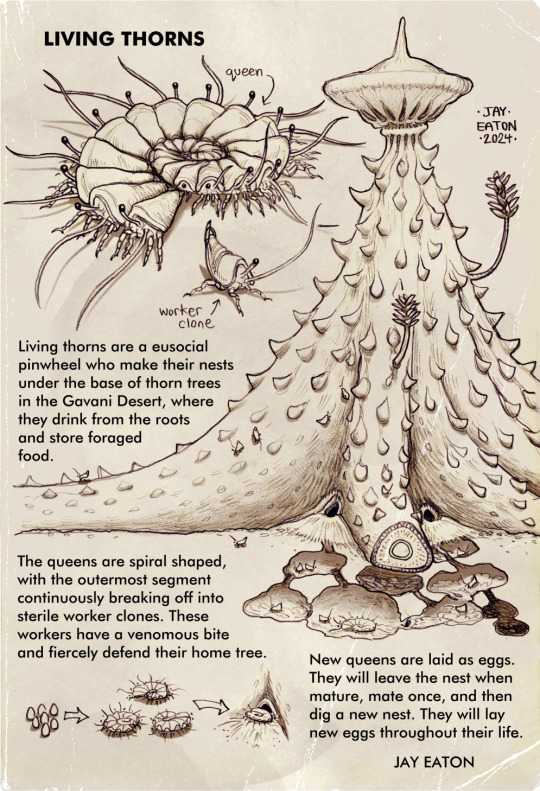
Simon Roy (@simon-roy) asked me to invent a guy (alien organism) for his newest book, Refugium, which comes with a guy emporium (alien life guidebook). There's a kind of radially symmetrical bug called pinwheels on the planet that will split into wedges as a defensive mechanism, so I Junji Ito'ed them into a eusocial spiral that workers snap off of once "ripe."
Refugium is out on Kickstarter right now and if you like alien ecology, failed utopias, and frontier stories I can highly recommend it. I've greatly enjoyed the previous books from the same universe.
#speculative biology#speculative evolution#spec bio#specbio#spec evo#specevo#scifi#hard scifi#aliens#alien#refugium
2K notes
·
View notes
Text
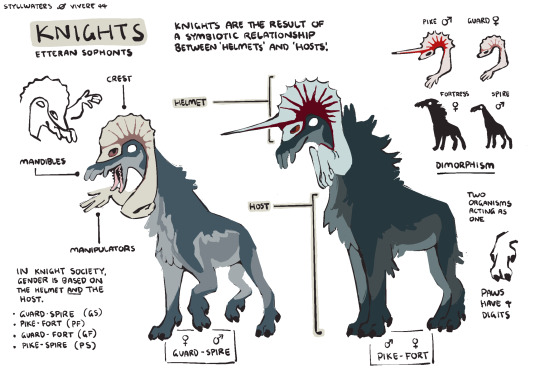


Hailing from the harsh planet of Ettera, Knights are the only sophont in the Zhagaviit system made of two consciousnesses.
---
At last, here they are! Nearly finished with redesigning every Vivere 44 species. These guys are retconned werewolves which I posted about some time ago. You might have noticed I brought back some space unicorn aspects as well! They've been through so many design changes but I've finally settled on something solid.
More information below!
I'll try to keep this concise. Most of this info is introductory biology.
Knights are the only sophonts living on Ettera, a mostly barren planet where survival is tough. Their civilisation is the least advanced compared to others in Zhagaviit, such as Arrows and Sea Crawlers. They were the third species to be contacted by the ZGC (Zhagaviit Galactic Community) followed by Post Humanity. Knights are known for being hardy, efficient, and motivated.
If it isn't already clear enough, Knights are two species in a symbiotic relationship acting as one individual. Helmets and Hosts have an evolutionary history so intertwined that one cannot survive without the other.
The Helmet is attached to the head of the Host, and will remain there for the rest of their life (unless separation happens - but we'll get into that later). In the relationship, their role is vision and dexterity. Since the Host is effectively blind, it is the Helmet's job to guide them. Their hands are also important, being the Knight's primary manipulators. They played a large part in early tool use. The Helmet lacks a mouth, and receives all its nutrients from the Host through a specialised organ not unlike an umbilical cord.
The Host is essentially the main body of the Knight. Wolflike and mammalian in nature, the Host is the Helmet's mode of transportation. Because they need to eat for two, Hosts are omnivorous and will eat just about anything. Although majority of their diet is comprised of meat, they are capable of digesting plant matter and bones. They are highly skilled and effective hunters.
It is in both party's best interests to assimilate as soon as possible. The Host cannot see without a Helmet, and within a few weeks bonding will become impossible. The stakes are higher for a newborn Helmet, because they cannot feed by themselves and will starve in under a week without a Host or an artificial feeder tube. Prior to first contact with the ZGC, Knights did not have the technology for artificial feeders, and infant death rates were high.
So how do two beings coordinate one body? The fact is that once assimilation occurs, they become one being. The Helmet's brain and the Host's brain are connected by millions of nerves exchanging signals. It's complicated, but the best way to describe the experience would be a 'mutual trance' in which full body coordination is achieved. They have shared interests and intentions. However, a Knight can mentally separate the Helmet and the Host, gaining back individuality; they do this for many reasons, perhaps to discuss something among themselves or simply for company. Yet on the whole, a Knight will spend 80% of their life in this 'trance'.
Both Helmets and Hosts have noticeable sexual dimorphism. Male Helmets are called Pikes, and females are called Guards. Pikes are distinguished by their horn, bold stripes, and more prominent crest spines. Guards lack a horn and have less contrast in their thinner markings.
Female Hosts are called Forts. They are larger than males and have a mane of fur on the back of their necks. Male Hosts, Spires, lack this mane.
In Knight society, individuals are usually referred to based on their combination of Host and Helmet. Since there are four sexes involved, there are four possible combinations.
Guard-spire [female Helmet, male Host]
Pike-fort [male Helmet, female Host]
Guard-fort [female Helmet, female Host]
Pike-spire [male Helmet, male Host]
(Knight languages have their own version of pronouns for each, but in English all are referred to as they/them by default. Of course, each individual has their own preferences. Usually a Knight will refer to themselves as we/us).
____
I'll get into Knight social structure, cultures and more in another post! For now, if you have any questions, feel free to send an ask. Always happy to answer!
#vivere 44#speculative biology#spec bio#my art#art#knights#aliens#speculative evolution#spec evo#xenobiology#artists on tumblr#science fiction#worldbuilding#headworld#its finally DONE
2K notes
·
View notes